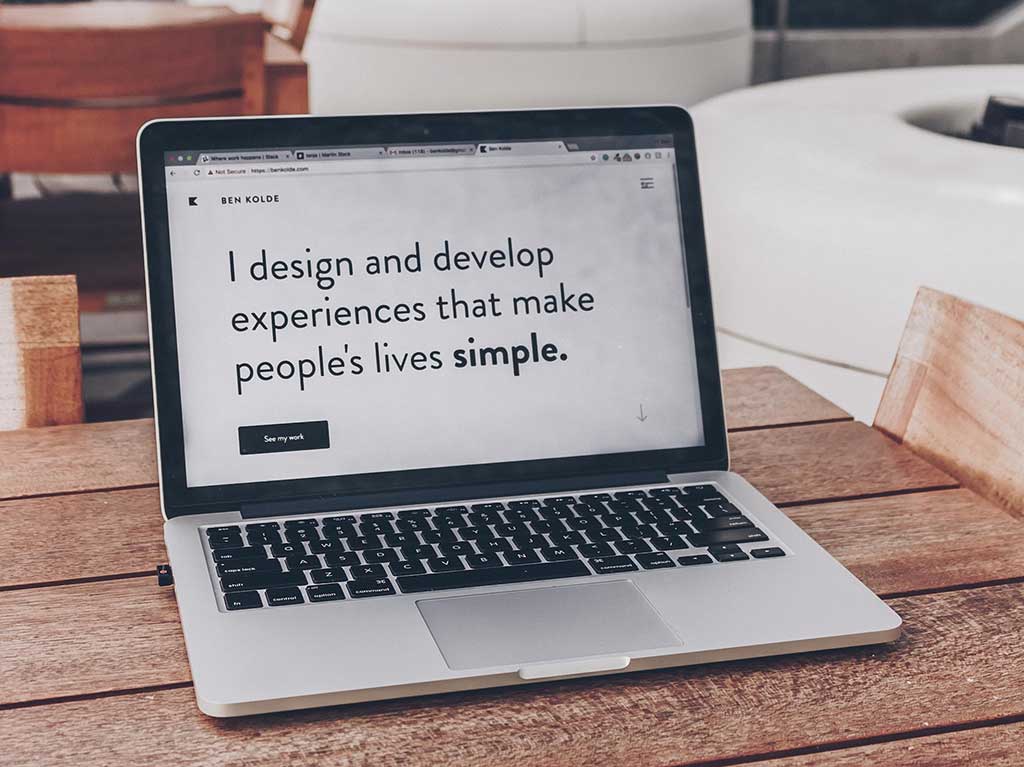Fundamentals
Top 4 UX Research Challenges In 2023

Written by: Phil Hesketh
Published on:
All UX researchers face common challenges in their quest to optimize product design and improve the customer experience.
From finding the right participants, to collecting informed consent, prioritizing accessibility and diversity, and ensuring that projects stay on track—there’s a lot to plan, and a lot of things that can get derailed along the way.
In this article, we’ll look at four of the top challenges UX researchers face in today’s fast-paced environment.
Is UX research difficult?
If UX research was “easy”, then technically anyone in your organization could do it. But even in organizations where research has been democratized, having a strong and highly skilled UX team is always the backbone for success.
The difficulty level can vary depending on the skill and experience of individual researchers, the size and complexity of projects, and the organization that research is being undertaken for—so UX researchers need to be able to navigate:
Ongoing learning curves - Researchers need to be able to understand a wide range of methodologies, learn how to run inclusive, accessible research sessions, and interpret their findings in a way that can be understood and actioned. Even for senior UX researchers, there’s a lot of ongoing learning to be done as technology advances and user needs and behaviours evolve.
Complex projects - Drawing a line between goals, testing, and product optimization can mean that research studies become incredibly complex—increasing the overall difficulty levels for their team. Researchers need to create briefs, estimate timelines, manage participant data, and get buy-in from stakeholders. And that’s just the beginning. Some research projects can take many months to complete, making it difficult to manage budget, resources, and access to participants along the way.
Trade-offs between data and business goals - Sometimes research findings can conflict with overall business goals, which means UX researchers can be placed in a position of finding a balance between the needs of stakeholders and the needs of users.
Despite the difficulties involved in a UX research role, it’s an exciting and evolving field, and one that’s being increasingly accepted as a vital part of development and design for companies with a product-led growth mindset.
What is the most challenging part of UX research?
Challenges come in all shapes and sizes for researchers, so to narrow things down, we asked the Consent Kit team—what would be the top four challenges UX researchers faced in the current environment?
Here’s what we came up with.
Establishing a robust UX research process
Developing a repeatable, efficient, and flexible research process is one of the top challenges researchers face. And research recruitment in particular is the single biggest time drain in the UX research process.
A lot of the jobs surrounding recruitment are either low value or non-specialised and repetitive. The challenge for operations is to standardize how this happens, and then automate things as much as reasonably possible—so that researchers get that time back to focus on more specialized tasks like synthesis, or knowledge sharing.
Creating a research brief
Creating a comprehensive research brief can be a challenge in itself. But without this initial roadmap to lay out the exact steps for each study, researchers can get easily sidetracked which can lead to budget blowouts, project delays, and research findings that don’t quite hit the mark.
A methodical research brief is one that can be adapted and optimized over time to help your researchers to:
Clarify the goals of the research
Map these goals to business objectives
Set out a project budget
Establish hypotheses
Choose the appropriate research methodologies
Find and recruit ideal participants
Decide on incentives
Establish timelines
Analyze the data
Present their findings
Read more: 5 Steps To Demystify The UX Research Process
Scoping the research
The UX role is a busy one, and before any new research gets underways, UX teams need to take the time to discuss:
Results of previous research
Priorities for new research
How this research can drive business growth
Without the whole team being in agreement, it can be challenging to communicate with other stakeholders on the need and purpose for new studies.
Another challenge in this area is deciding on the level of research needed. Judd Atkins (Ex-Airbnb, Ex-Meta, Ex-Yahoo) defines these levels in a recent article as micro, middle, and macro research, where:
“Macro-research is strategic in nature, business-first, and future-thinking. It provides concrete frameworks that guide macro business decisions.
Middle-range research is focused on user understanding and product development.
Micro-research is closer to technical usability, eye tracking, and detailed interaction development”
Macro and micro research are the most useful for business, but many researchers are too focused on mid-level research which doesn’t directly answer very specific questions, or help to guide or inform the businesses overall strategy.
Understanding and aligning with business strategy
For excited UX researchers, it’s important to find ways to align the work they’re doing with stakeholder needs and overall business goals. They also need to analyze their findings in a way that educates stakeholders on the importance of their work, and how their research can help drive revenue.
Even with a solid UX plan and a convincing argument in favour of conducting a new study, researchers often need to reduce their scope, their budget (and their hopes and dreams), and be able to adapt to changes—or negotiate a different approach to get support and buy-in from stakeholders and partners.
Overall, researchers need to be more strategic about what types of research they do, and how to demonstrate their value as a business function in order to maintain the relevance of their roles, secure funding, and advocate for ongoing studies.
Optimizing the process
Creating a UX research plan isn’t a once-and-done process. Every research initiative will have challenges that pop up along the way, so researchers need to make time to reflect on what worked and what didn’t with the existing process.
Keeping track of the process itself can help researchers spot gaps or problems about things like resource limitations, timelines, and participant management.
Documenting and sharing these experiences and findings can help both researchers and stakeholders to figure out ways to avoid these challenges in the future, and optimize the research process for future studies.
Scaling research initiatives
Without a robust process in place, it can be challenging for organizations to scale their research, democratize research across teams, and manage large volumes of data in a compliant and ethical way.
Thankfully there are data management tools that can help reduce participant touchpoints for researchers, and ensure that consent and data security requirements are taken care of throughout each UX research study.
Conducting research sessions
Finding participants for every new study can be a time-consuming and frustrating part of the research process. For a study to be successful, a lot of thought needs to be given to the before, during, and after phases of participant recruitment.
Recruiting the right participants
Each study requires different methodologies and demographics of participants to enable researchers to gather high-quality feedback and data. This means thinking about:
The best recruitment channels to use for a given study
The number of participants needed to draw solid conclusions
Whether qualitative or quantitative research methods are more appropriate
Whether research will be done remotely, in the field, on a 1:1 basis, or in a group setting
Whether frequent participants are at risk of burnout
The types of questions you need to ask to get high-quality responses
The time frame available for research
The budget allocation
Developing a more standardized process for recruitment can save researchers time and money, and creating an internal research hub is an ideal solution if your organization is intending to scale its UX research.
Read more: A 10 Step Framework For Recruiting Participants For Research
Scheduling research sessions
With the rise of remote work and distributed teams, scheduling and running in-person research sessions can be…let’s say…a little chaotic.
Researchers and participants might be located across different time zones, and participants (especially if they’re working from home) can be easily distracted from the research at hand by notifications, urgent work matters that need attending to, background conversations, or family and pets that might pop in during a session.
Remote research sessions can also pose challenges due to the fact that they limit a researcher’s ability to observe users in a close setting for things like usability testing.
No shows
Participant no-shows can throw a major spanner in the timeline and outcome of any project, and even the most organized UX researchers aren’t immune to this happening.
Users can get busy, or simply forget they had a research session on their calendar—so to ensure people remember to show up, researchers can send friendly reminders to participants 24 hours before a research session, and a final reminder one hour before sessions begin.
Data management
Alongside the numerous recruitment challenges, researchers also need compliant, secure systems to collect, manage, and synthesize the data from their research sessions.
With large volumes of information, it can be difficult for researchers to juggle recruitment alongside document management and data governance, causing ongoing issues with:
Ensuring informed consent has been given
Diversity of the recruitment pool
Consolidation of participant data
Potential participant burnout
Communication across teams
Carrying out responsible research
Today’s researchers need to clearly demonstrate empathy for participants, and ensure they tick all the legal boxes for compliance and consent before research sessions take place.
If there’s no formalized system to ensure this is being done, or if teams are jumping in and out of spreadsheets and emails, it can put your organization at serious risk of non-compliance.
Diversity and inclusion
Ensuring accessibility and inclusion are growing priorities for today’s UX researchers. And designing for a diverse user base means talking to a diverse user base as part of the research process.
This means researchers need to understand and empathize with the needs, preferences, and daily challenges of all their users so they can create products and services that are simple and enjoyable for everyone to use.
Informed consent
For any type of research, informed consent needs to be freely given first. But tracking this and ensuring consent forms have been signed off is something that can often slip through the cracks for busy researchers.
If you don’t have the technology in place to automate the consent process, you can use this handy consent checklist to help you out.
Data privacy and ethics
Researchers need to be aware of the data they record, and what kind of processing it needs to comply with privacy, security, and ethics standards. And on the flipside, participants need to know that what they’re sharing with you will be treated with respect.
Data needs to be collected with informed consent, stored safely with appropriate access permissions, and participants must be given the right to revoke or delete their data and consent at any time.
This can be a complex challenge. Many organizations rely on scattered processes to handle all of these requirements, which can cause gaps in team knowledge of what has and hasn’t happened, and leave organizations at risk of compliance breaches.
For this reason, many organizations use a research CRM to ensure that all data is recorded and stored compliantly, and to help participants feel safe when they’re taking part in research sessions.
Read more: What Is A User Research CRM?
Putting UX research into action
Once the challenges of planning and research have been dealt with, UX researchers face one final hurdle—turning their findings into design improvements.
Reporting on research findings
Part of a comprehensive UX research plan includes that very exciting bit at the end, where researchers pull together everything they’ve collected so they can synthesize findings and report back on what they’ve discovered.
Researchers need to deliver this information in a way that:
Can be easily understood
Isn’t boring
Stakeholders can understand why it’s important
Ties the findings to business goals
Clearly defines how the research should be implemented in product design and development
But while this sounds simple in theory, researchers often run into problems with:
Effective communication
Creating the right style of presentation for different audiences
Differing opinions about what happens next
Having to make trade-offs between business needs and user needs
The resources need to incorporate the research into product development
Mapping out their findings in terms of growth and profit potential
Measuring the success of changes
Once research findings have been actioned in the product design, it’s critical that there are systems in place to measure changes (for better or worse).
It’s often difficult to prove the direct impact of UX changes on critical conversion points (e.g. demo sign-ups, free trials, or NPS scores), which in turn makes it tricky for researchers to prove that their studies are having an impact on profits and user satisfaction.
Keeping up with technology and trends
The field of UX research is continually evolving, and keeping up with the latest trends, tools, and methodologies can be a challenge too.
What worked for researchers in 2021 might not be enough to stay competitive in today’s crowded product landscape, so it’s essential that everyone on the UX team is constantly learning.
The best way for UX researchers to remain up-to-date with design methods, tools, user feedback trends, and competitor offerings is to stay informed—which means staying connected to industry news, reading books about UX research, attending workshops and conferences, and networking with colleagues in the UX research community.
The other key element of staying current is staying active. This includes practicing what you are learning so that you can apply it to real work situations. Keeping an eye on competitors is also essential, allowing researchers to better understand the market and stay ahead of trends.
José Moya - Capicua Full Stack Creative Hub
UX researchers need to be able to keep up the latest in new devices and emerging user behaviors. And with technology like AI, augmented reality, and wearable tech moving at incredible speed—researchers need to ensure they’re always one step ahead.
Wrapping up
This is by no means an exhaustive list of all the challenges involved in UX research! And as this field is constantly growing and evolving, there are constantly new problems to overcome. But that’s what makes the role of a UX researcher so exciting and rewarding.
To ease some of the burden, it’s essential that researchers plan ahead with a solid, repeatable process in place to guide their projects. They also need to be able to communicate and collaborate effectively with other teams, and stay adaptable to the changing needs of stakeholders, users, and the wider marketplace.
If you’re looking to carry out UX research studies for your organization, Consent Kit can help you formalize your participant recruitment process, manage participant data with ease, and ensure your studies are accessible, compliant, and efficient. Try it free for 14 days.



